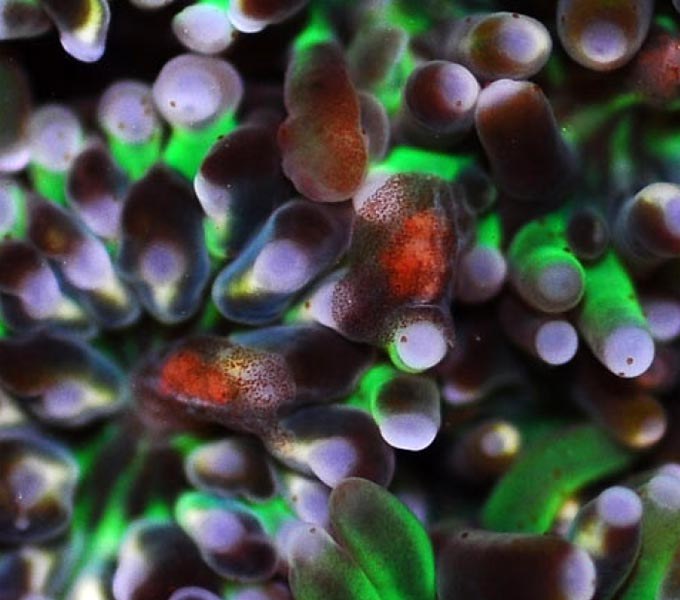If flatworms aren’t harming corals by directly eating them, shading them, or reducing their resistance to pathogens and environmental changes, flatworms can harm corals in yet another way: by robbing them of food.
To study the effects of Waminoa sp. flatworms on the LPS coral Galaxea fascicularis, researchers introduced Artemia nauplii (newly-hatched brine shrimp) to corals infested with flatworms. The team observed the flatworms actively hunting nauplii before the corals had a chance to feed on them. A terrific one minute video shows the Waminoa sp. flatworms capturing Artemia nauplii as they flow past the coral polyps. An individual polyp is spotlighted at approximately 20 seconds to help view this behavior better.
The researchers “conclude that the presence of epizoic acoelomorph flatworms may affect long-term coral growth and health.”
The short paper is published in the latest issue of Coral Reefs.
Dip and Quarantine: Not Optional!
-

- Four killer Aussie Scolymia sp. prior to dipping
There really is no excuse to skip treatment and quarantine of new corals. Some pests are devastating enough to make even the most dedicated aquarists throw in the towel. There are simply too many invasive pests circulating in the aquarium hobby; Hobbyists must exercise caution with any new addition, even when purchasing from “trusted” sources. Most pests are extremely difficult to eradicate, so the best approach is to prevent their introduction in the first place. I recommend a combination of dips and a two week quarantine of new specimens to observe them for signs of pests.
Live Aquaria has written a useful two-part synopsis to help you identify common pests:
Here are some popular dipping solutions used to treat new corals before quarantine:
- Two Little Fishes ReVive
- SeaChem Reef Dip
- Brightwell MediCoral
- CoralRX
- Salifert Flatworm Exit
- Lugol’s Iodine (Potassium Iodide)
- Hydrogen Peroxide (H2O2)
Note: Different species will behave differently to the dipping solutions listed above. Please do your research and follow the manufacturer’s instruction (when available) when attempting dips for the first time.
Take it from someone who restarted his reef tank due to invasive flatworms: Dip and quarantine. The time and money I spent restarting my tank dwarfs what is required to pre-treat and quarantine … not to mention the poor corals I lost due to my initial negligence/laziness. Since I started dipping and quarantining all my new corals and clams, my tank remains pest-free.
Nothing elaborate: A 10 gallon aquarium, powerhead, heater, and cheap lights is all that is required for a quarantine tank.












0 Comments